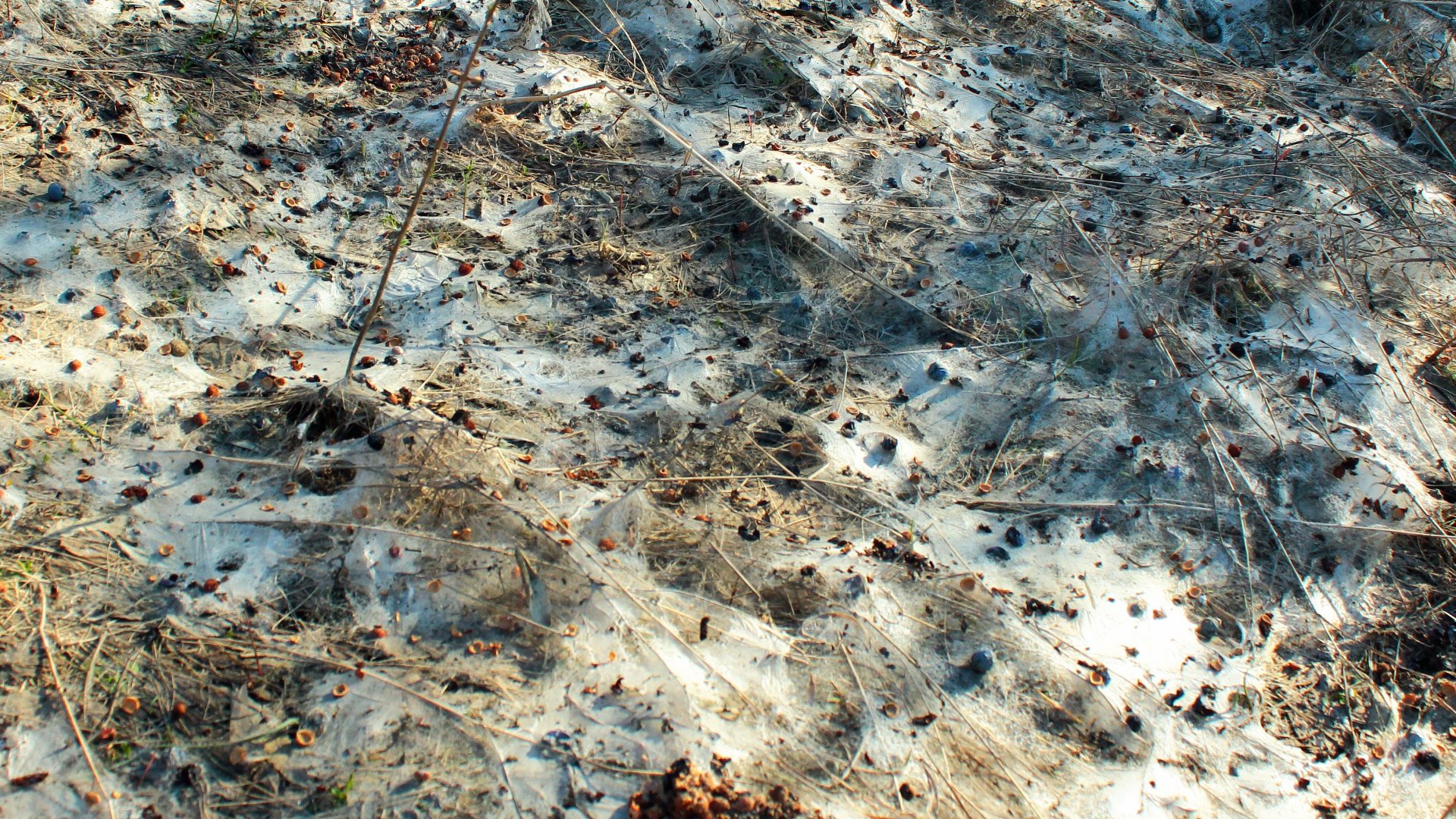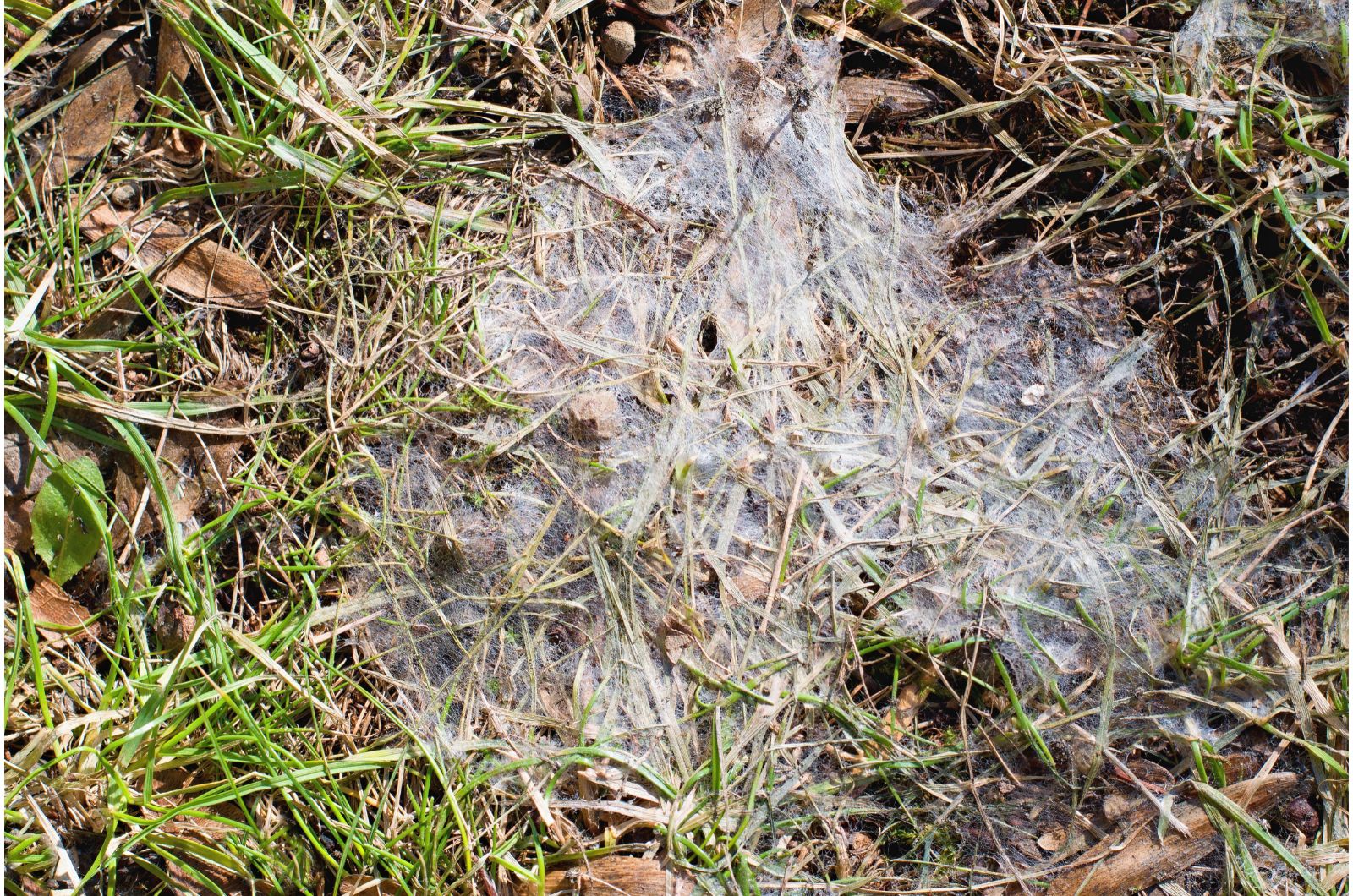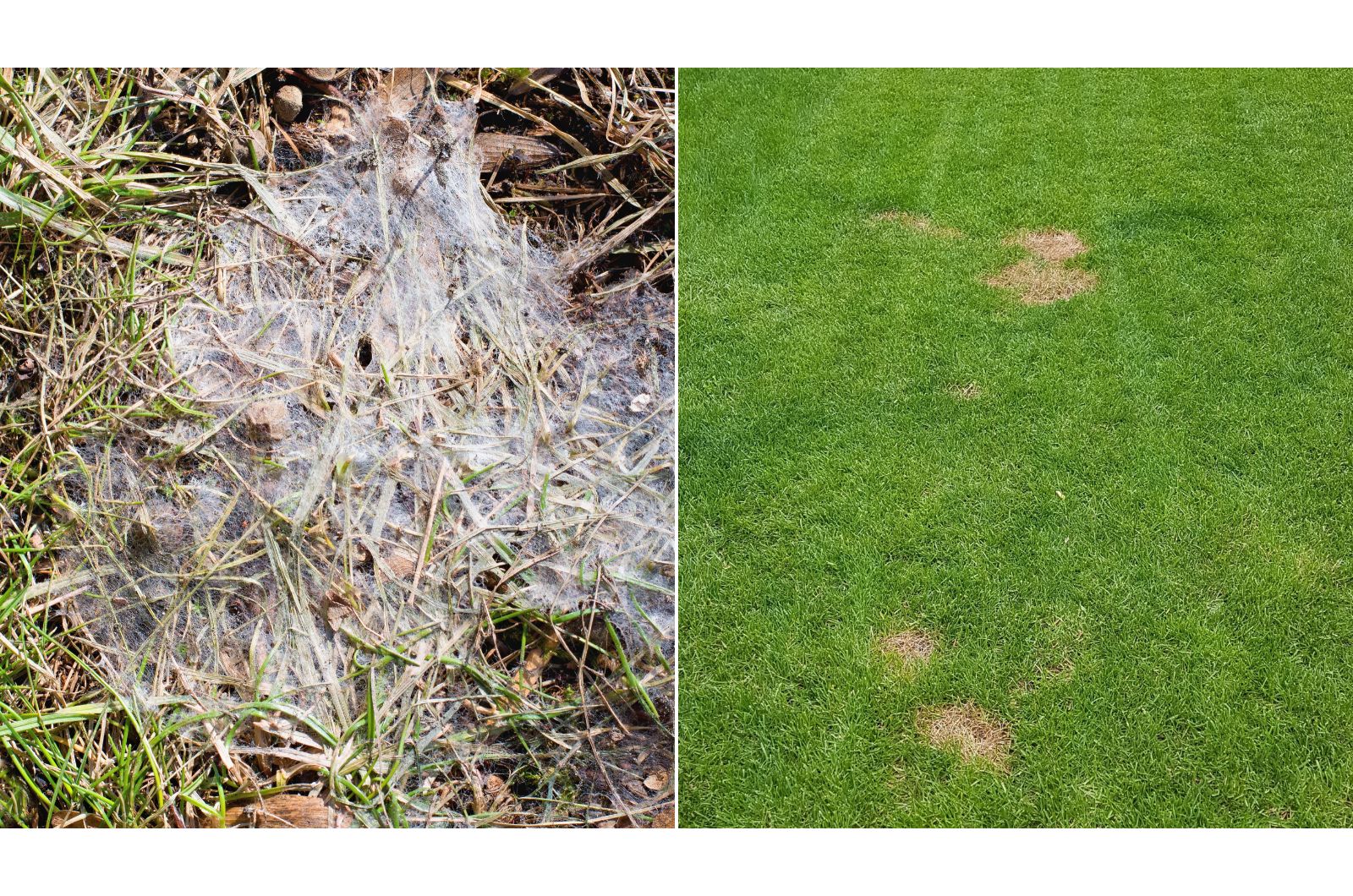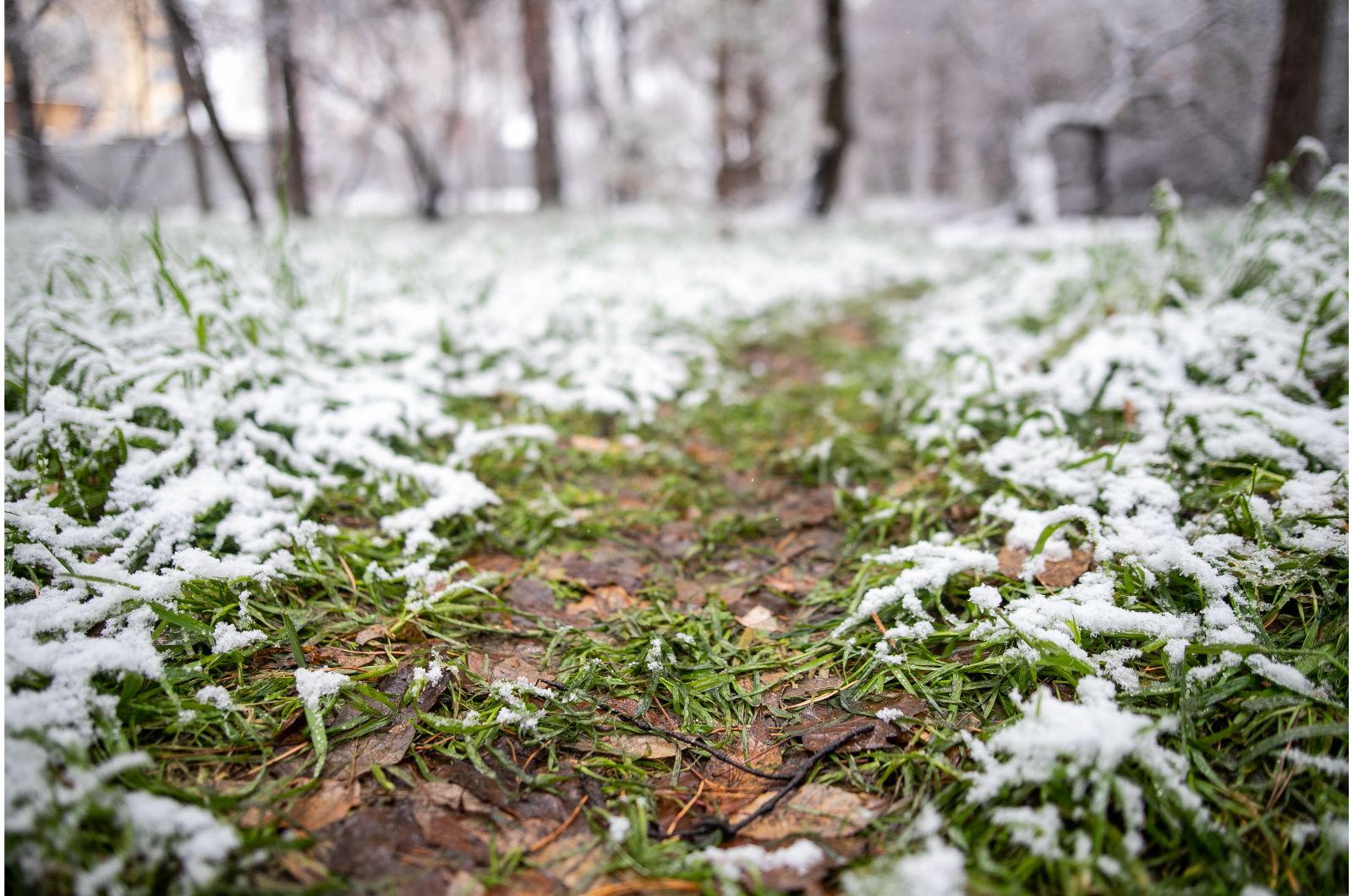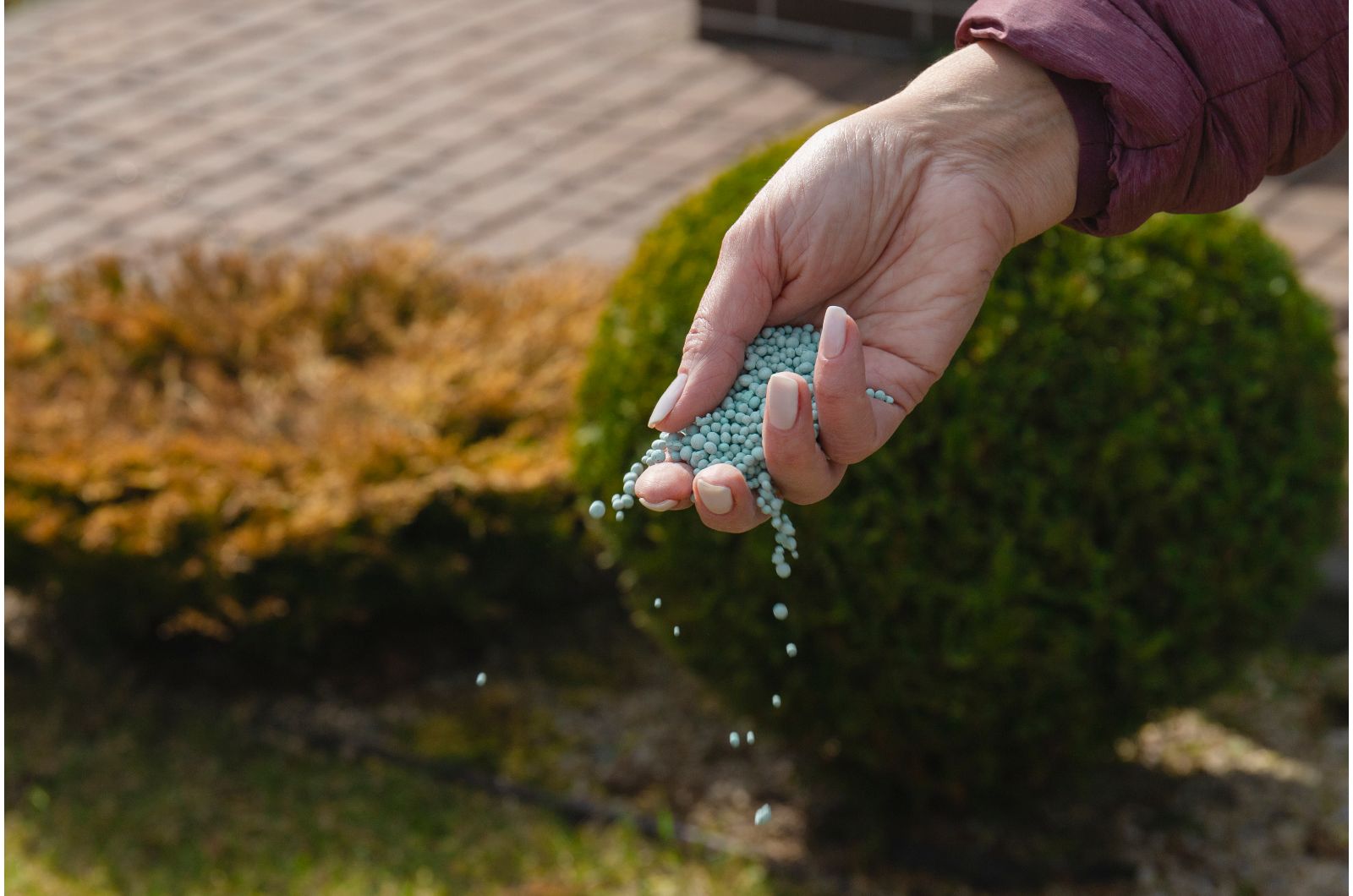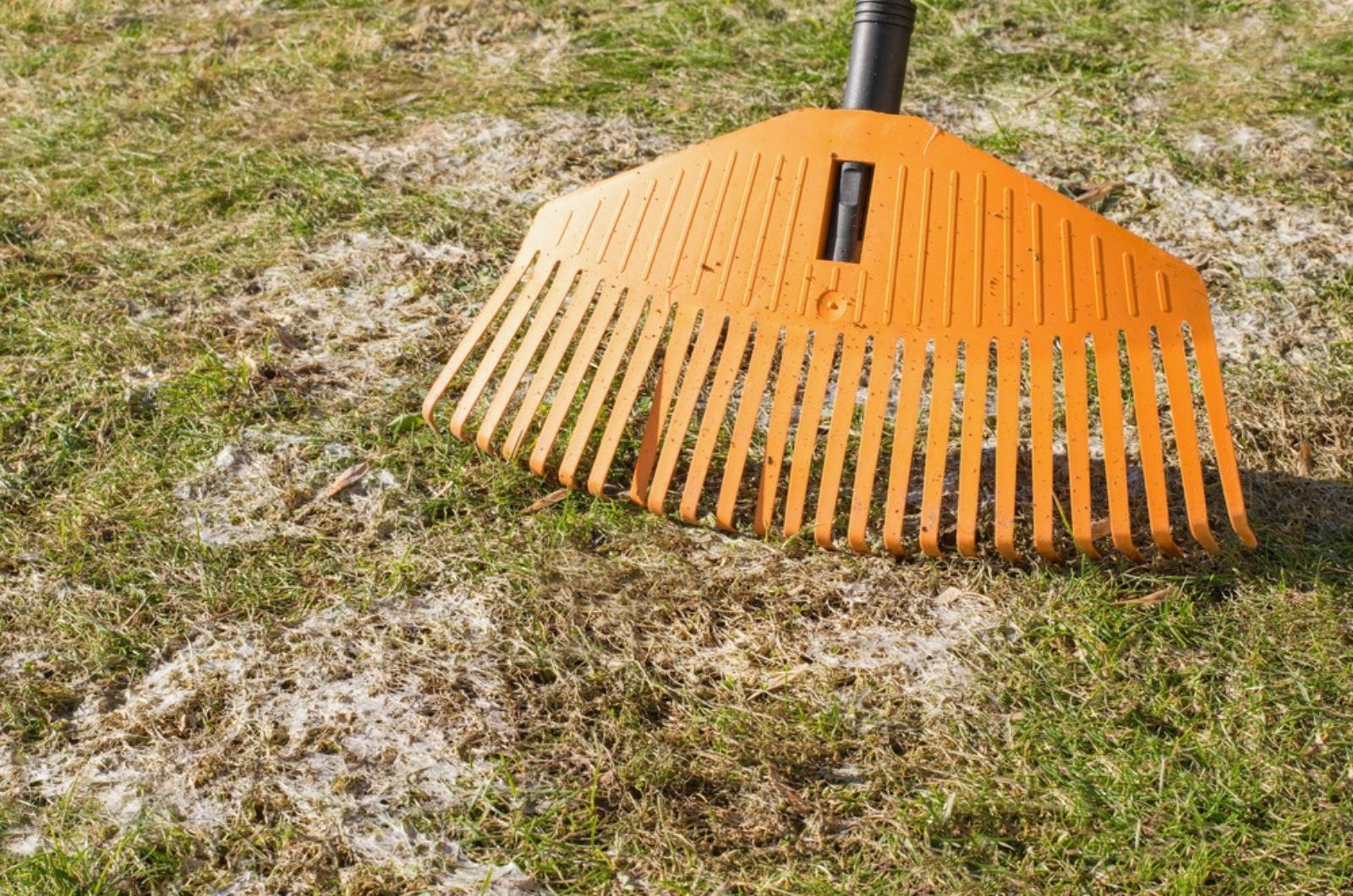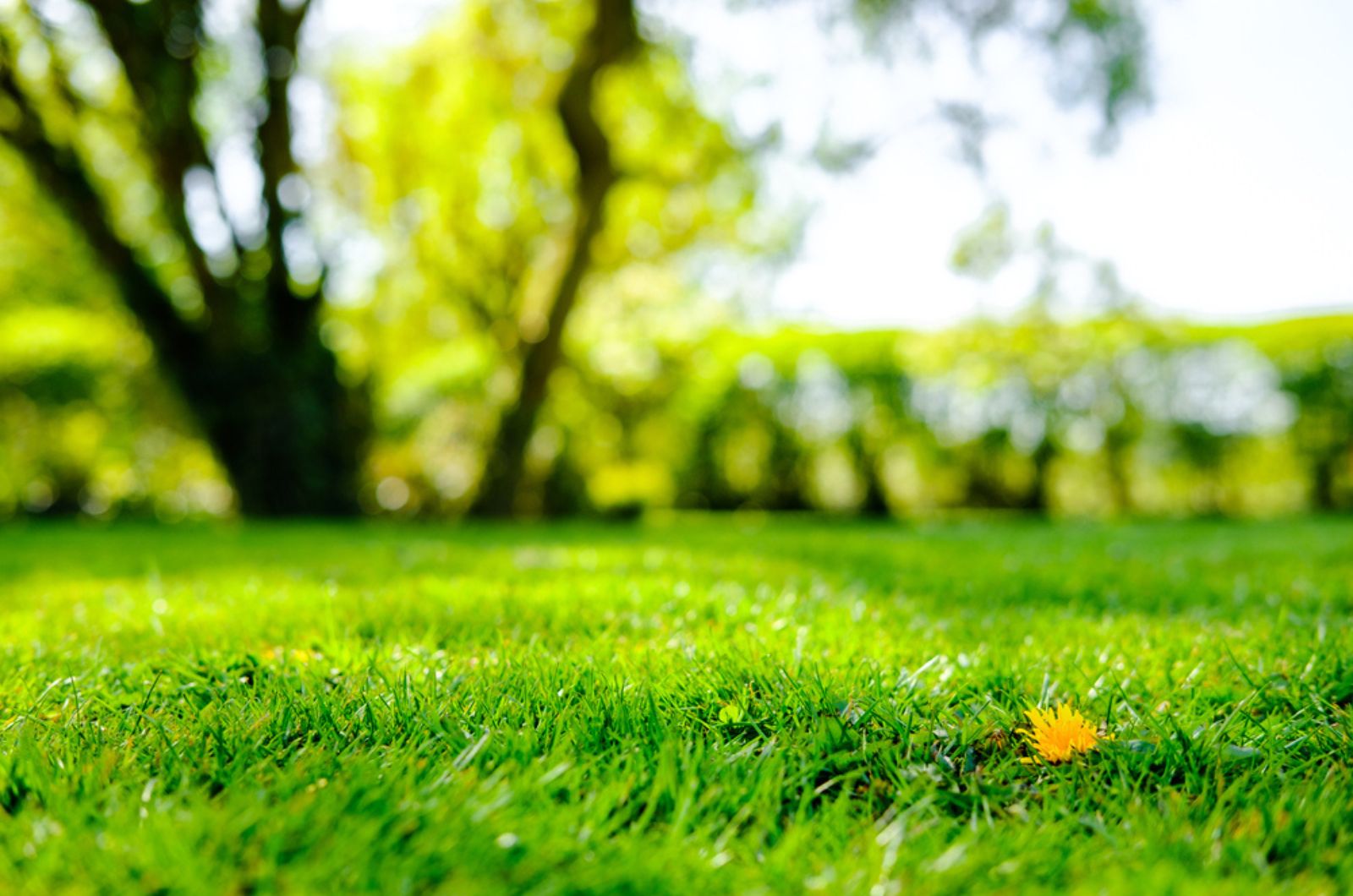Maintaining a green lawn in colder climates doesn’t have to be difficult. Yet, there are some things we have no control over.
One of those things is snow mold. This lawn disease isn’t that terrible, but it taints the appearance of your grasses.
But what is it exactly? And how do you get rid of it? Will it go away on its own? These are all the questions I’ll tackle in the following sections.
Let’s get started!
What Is Snow Mold?
Snow mold is one of the most common lawn diseases. There are two types: gray and pink snow mold.
Gray mold isn’t that dangerous and it mainly affects grass blades. Pink mold is the dangerous one. It can kill your grasses if you don’t treat it on time.
What Does It Look Like On Lawns?
You won’t notice any symptoms of mold until the snow thaws and you can inspect the lawn yourself.
The telltale sign is the presence of mold resembling cobwebs or cotton wool. As the snow begins to melt, you’ll notice patches in your grasses. They can range anywhere between a few inches to a couple of feet in size.
As they become more prominent, you’ll soon recognize which type of mold you’re dealing with.
Gray mold turns into gray-white or tan spots. Pink mold creates circular patches of yellow, red-brown, or orange-brown that turn pink over time.
The bad news is that snow mold can affect any type of grass. Luckily, gray mold is far more common on lawn grasses. Pink mold mainly attacks creeping bentgrass – a variety we commonly see on golf courses.
The key to keeping your yard healthy is winterizing your lawn the right way. Here’s how to avoid dealing with snow mold in the first place!
How To Avoid Snow Mold
You need to maintain your lawn all year long if you want to avoid snow mold. This is especially true for fall care. Prepare your grasses well, and you may avoid dealing with snow mold.
Give your lawn grasses a final cut before winter. Longer blades encourage snow mold because there is less air circulation once snow covers them.
Dethatch your lawn. This will remove the lifeless grass blades that are a breeding ground for snow mold. Rake the fallen foliage and debris as they pile up. And try to clear away heavy snows off the grass if possible.
Use winter lawn fertilizers if you’re feeding your grasses in fall. They are slow-release and don’t contain as much nitrogen as summer lawn fertilizers. These fertilizers won’t cause sudden new growth that won’t be able to tolerate winter conditions.
Focus on using potassium fertilizers. This nutrient may reduce plants’ susceptibility to diseases. (1)
Finally, try preventive fungicide treatments in fall. This will protect your plants from snow mold, especially if you’ve had troubles with it in the past.
How To Treat This Lawn Disease
The spring comes and you notice snow mold on your lawn. What should you do?
Wait until the snow has melted and the ground dries out. Rake the moldy patches on your lawn. This method will separate the grass blades, make them stand tall, and introduce more airflow.
If you notice discolored patches, overseed them after treating the mold problem. This will fill the bare patches and give your lawn a new lease of life.
Will It Go Away On Its Own?
Snow mold can go away on its own once the temperatures get warmer, the snow starts to melt, and the ground becomes drier.
Proper lawn care right from the beginning will speed up the healing process. Fertilize your grasses to make them stronger. Mow them often to introduce more airflow.
And rake them every once in a while to remove plant debris and increase air circulation.
References:
1. Amtmann, A., Troufflard, S., & Armengaud, P. (2008). The Effect of Potassium Nutrition on Pest and Disease Resistance in Plants. Physiologia Plantarum.

